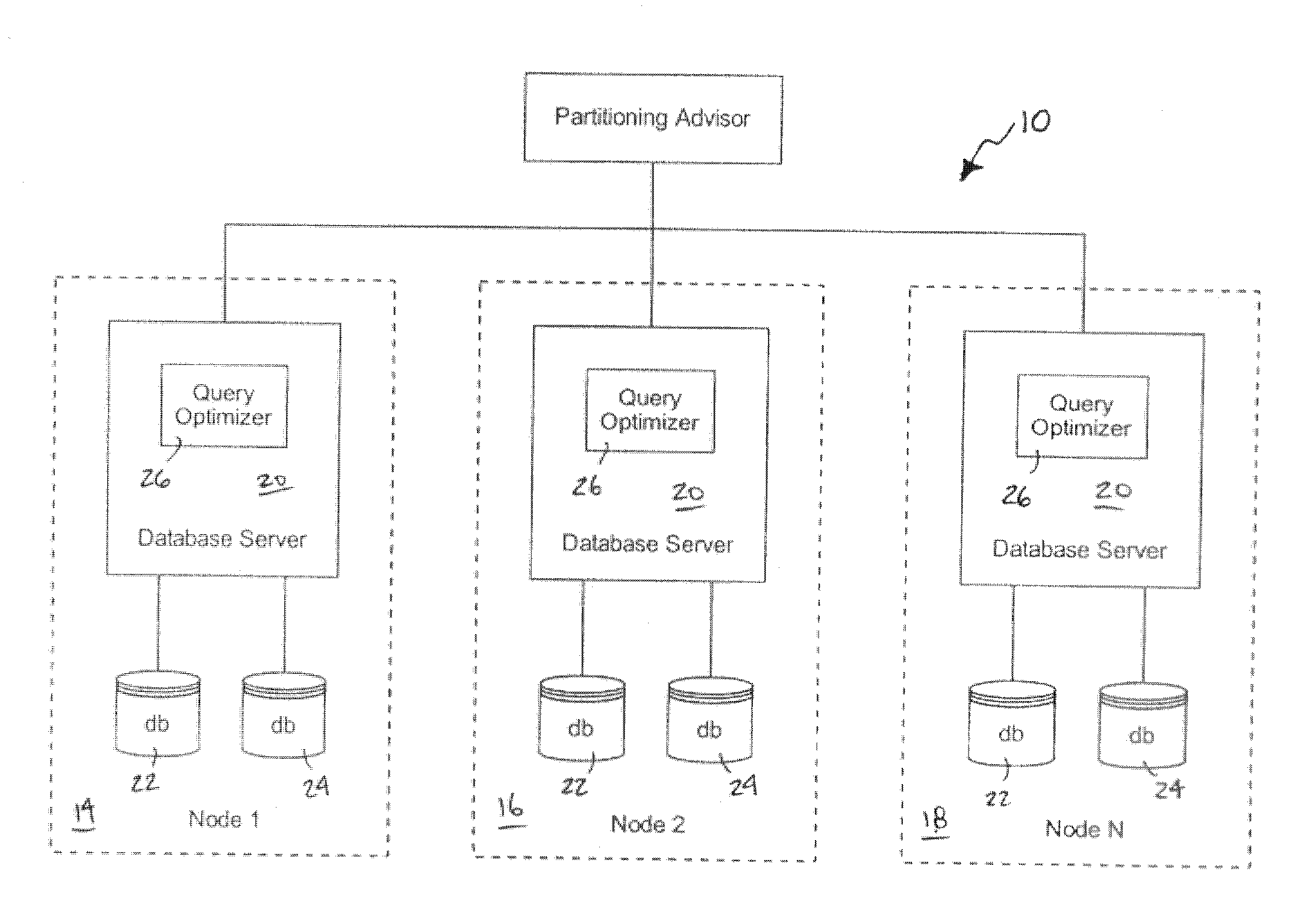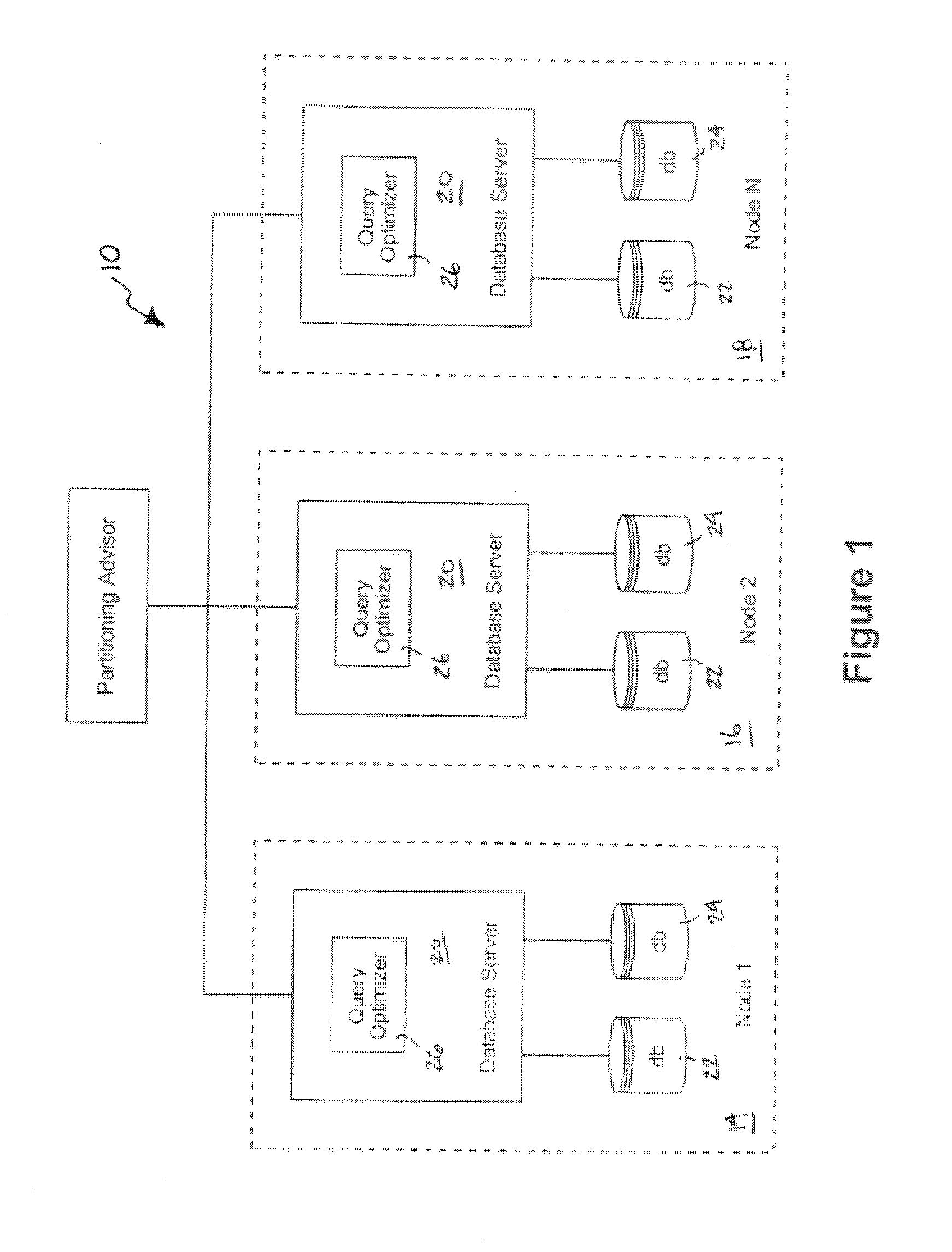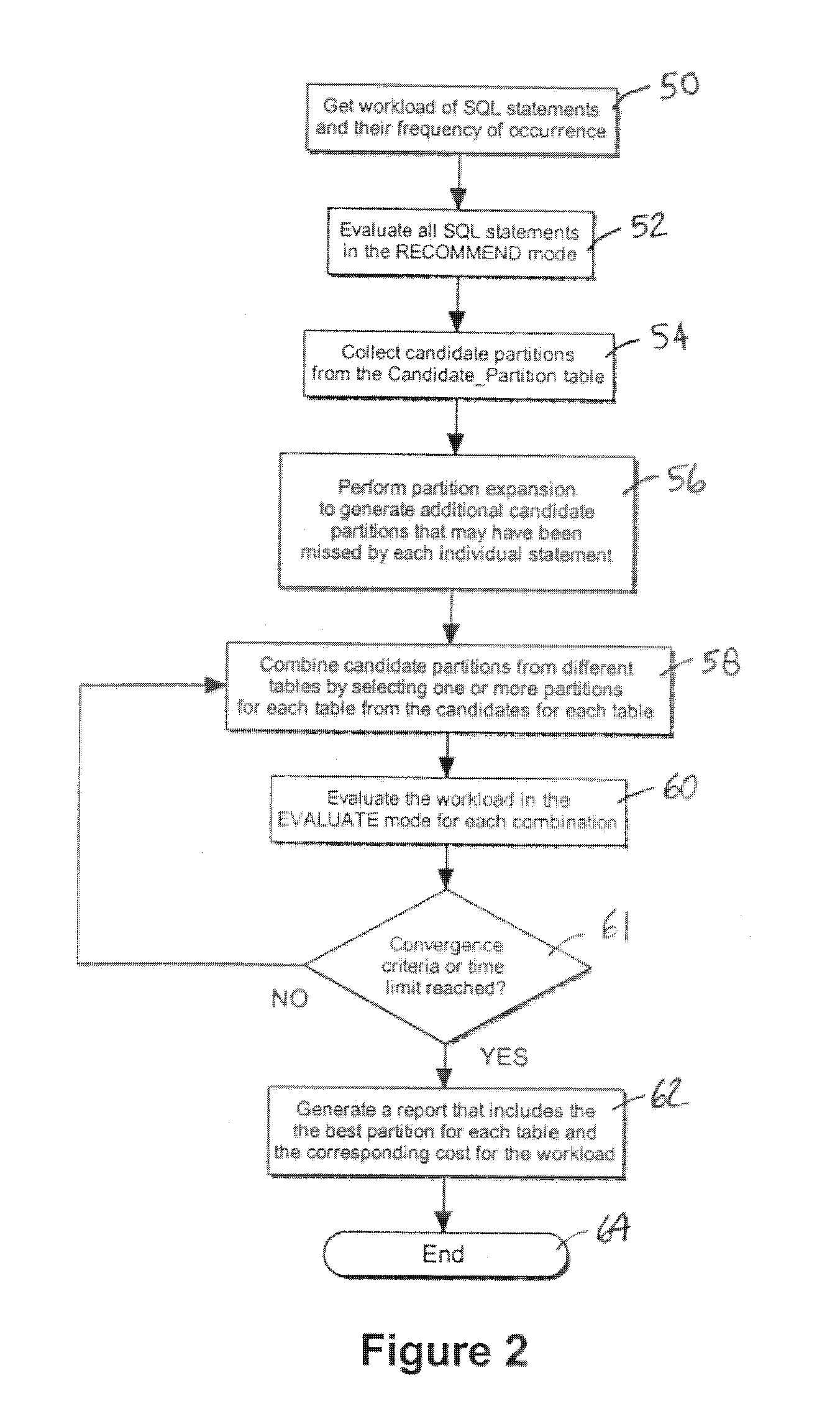System and method for automating data partitioning in a parallel database
a database and data technology, applied in the field of computer software, can solve the problems of inability to scale to hundreds or thousands of nodes, suboptimal data partitioning can seriously degrade performance, and complex selection of the best way to store data, so as to achieve the effect of minimizing the workload the overall cos
- Summary
- Abstract
- Description
- Claims
- Application Information
AI Technical Summary
Benefits of technology
Problems solved by technology
Method used
Image
Examples
Embodiment Construction
[0020]Referring initially to FIG. 1, the system architecture is shown and is generally designated 10. FIG. 1 shows that the system 10 includes first node 14, a second node 16, and an nth node 18. As shown, each node 14, 16, 18 is preferably identical and includes a database server 20 that is connected to a first database 22 and a second database 24. It can be appreciated that the nodes 14, 16, 18 may be different, but for optimal performance they are identical. Moreover, it can be appreciated that the system 10 can include more than the three nodes 14, 16, 18 shown and each node can include more than the two databases 22, 24 shown. Also, each database server 20 includes a query optimizer 26. A separate partitioning advisor 28 is connected to the database servers 20, specifically the query optimizer 26.
[0021]It is to be understood that the preferred system, as shown in FIG. 1, is a shared-nothing system in which each node can be used to execute queries in parallel. A given query can ...
PUM
 Login to View More
Login to View More Abstract
Description
Claims
Application Information
 Login to View More
Login to View More - R&D
- Intellectual Property
- Life Sciences
- Materials
- Tech Scout
- Unparalleled Data Quality
- Higher Quality Content
- 60% Fewer Hallucinations
Browse by: Latest US Patents, China's latest patents, Technical Efficacy Thesaurus, Application Domain, Technology Topic, Popular Technical Reports.
© 2025 PatSnap. All rights reserved.Legal|Privacy policy|Modern Slavery Act Transparency Statement|Sitemap|About US| Contact US: help@patsnap.com



